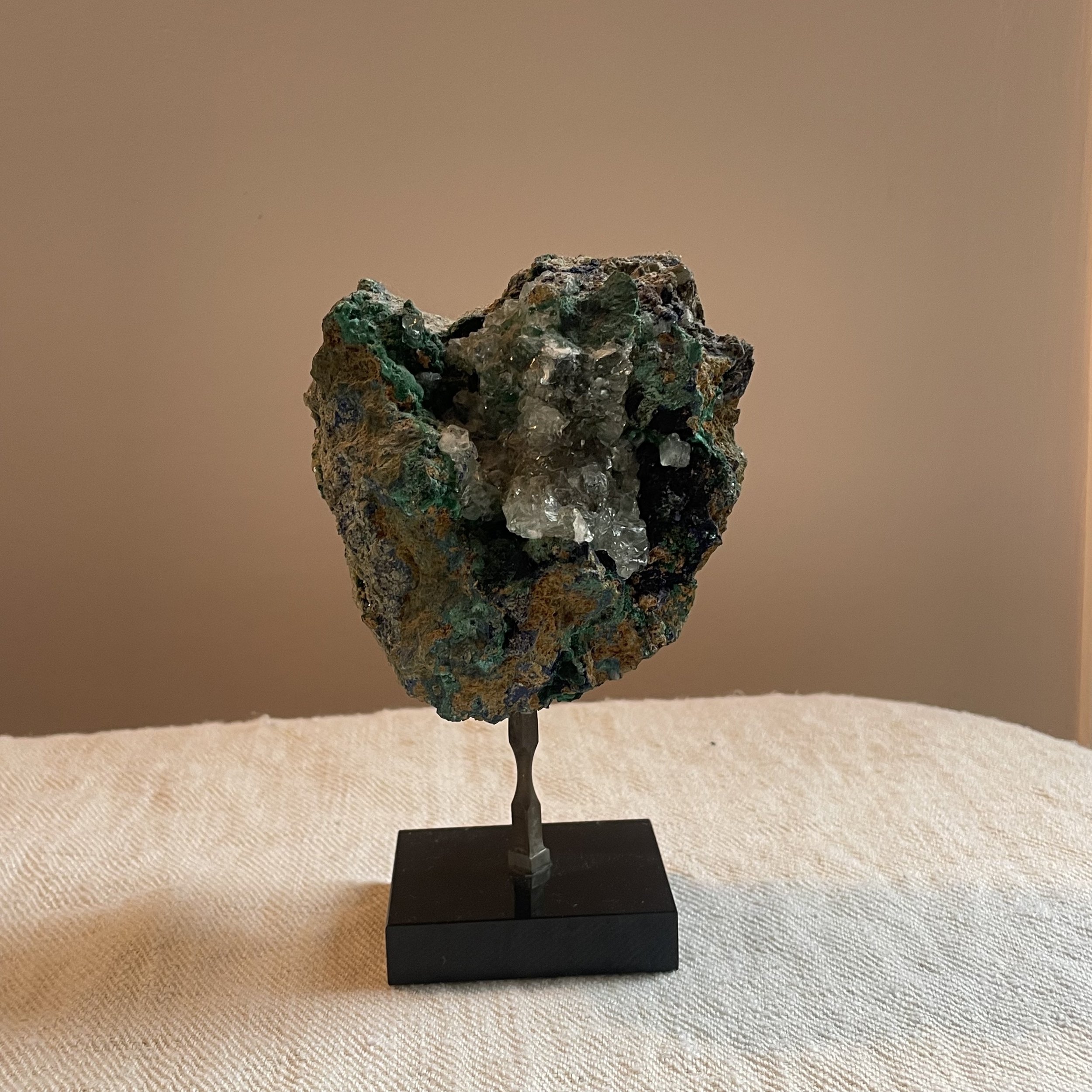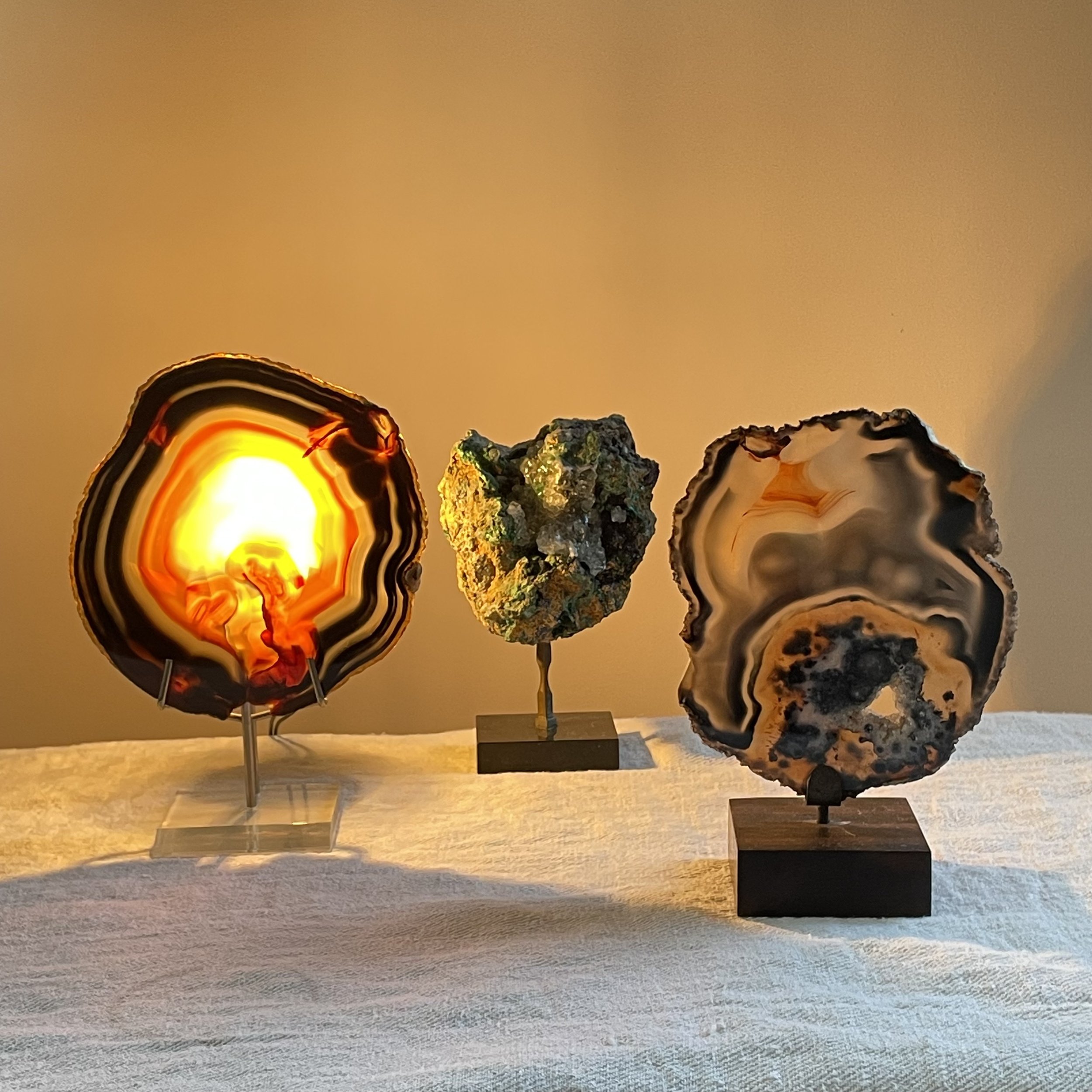Grand chat, Jörg von Manz






Grand chat, Jörg von Manz
Grand chat en terre chamottée au naturel, décor à l’engobe
Jörg von Manz
Circa 1990, signé en dessous
H 31 x 47 x 22 cm
Très bon état
Large cat in natural chamotte clay, decorated with engobe
Jörg von Manz
Circa 1990,
signed underneath
H 31 x 47 x 22 cm
Very good condition
L'artiste Jörg von Manz (1939 - 1997)fut actif à Spiesbrunn près de Breitenberg, est considéré par les collectionneurs et les experts comme une personnalité exceptionnelle en raison de ses inventions originales et de son large éventail de formes. La rétrospective « À pleine vie » organisée au château d’Obernzell en 2020 en a donné un aperçu
Jörg von Manz est sans aucun doute l'un des céramistes les plus importants de Bavière. Son atelier à Pattendorf, près de Landshut, dans le "Kröning", a conduit au brevetage de son travail sous le nom de "Kröninger Keramik" dès 1969. Plus tard, il a eu des ateliers à Gottsdorf et à Breitenberg.
En Bavière, surnommé « le potier fou » le e céramiste Jörg von Manz est une légende.
En 2013, une première exposition de vaisselle utilitaire et de sculptures de Jörg von Manz a eu lieu au Musée Château d’ Obernzell, qui a pour la première fois attiré l'attention sur l'œuvre céramique unique de l'artiste, décédé en 1997 à l'âge de 58 ans. Après avoir connu de grands succès dans les années 1960 avec la vaisselle utilitaire, von Manz s'était retiré dans la forêt bavaroise, à Breitenberg, où il a créé son attachant monde fantastique de lutins et d'esprits gardiens, de chevaliers de la fortune et de messagers de l'amour.
Jörg von Manz a suivi un apprentissage chez le céramiste Franz Eska à Munich et en 1964, il a ouvert son premier atelier à Pattendorf, dans l'ancien paysage de taille de pierre de Kröning près de Landshut. Son idée de combiner le grès bavarois traditionnel avec la simplicité du design scandinave a touché son public de l'époque. Il a fait revivre la tradition de la poterie de Basse-Bavière en réinterprétant l'ustensile rustique d'une manière individuelle et nouvelle.
Après avoir déménagé à Gottsdorf près de Passau, il a fait breveter sa "Kröninger Keramik".
Se désintéressant de la vaisselle utilitaire, il a finalement voulu faire "quelque chose de déraisonnable" et a commencé à peindre des assiettes et des boîtes de conserve et à travailler de plus en plus librement. Progressivement, ses créatures ont été privées de toute utilité. Seuls sont demeurés les animaux de son bestaire à la lisière du fantastique.
Il s’est laissé contaminer par des formes d’influences lointaines dans le temps et dans l’espace. Bien que von Manz ait affirmé "Je n'ai pas de savoir-faire", il a écrit un chapitre important de l'histoire de l'artisanat bavarois.
The artist Jörg von Manz (1939 - 1997), who was active in Spiesbrunn near Breitenberg, is considered by collectors and experts to be an outstanding personality because of his original inventions and his wide range of forms. The retrospective exhibition "À pleine vie" at Schloss Obernzell in 2020 provided an insight into this.
Jörg von Manz is undoubtedly one of the most important ceramists in Bavaria. His workshop in Pattendorf, near Landshut, in the "Kröning", led to the patenting of his work under the name "Kröninger Keramik" as early as 1969. Later he had workshops in Gottsdorf and Breitenberg.
In Bavaria, nicknamed "the mad potter" the e ceramist Jörg von Manz is a legend.
In 2013, the first exhibition of Jörg von Manz's utilitarian tableware and sculptures took place at the Obernzell Castle Museum, which for the first time drew attention to the unique ceramic work of the artist, who died in 1997 at the age of 58. After achieving great success in the 1960s with utilitarian tableware, von Manz had retired to the Bavarian forest in Breitenberg, where he created his endearing fantasy world of elves and guardian spirits, knights of fortune and messengers of love.
Jörg von Manz completed an apprenticeship with the ceramist Franz Eska in Munich and in 1964 he opened his first workshop in Pattendorf, in the former Kröning stonecutting landscape near Landshut. His idea of combining traditional Bavarian stoneware with the simplicity of Scandinavian design touched his audience at the time. He revived the Lower Bavarian pottery tradition by reinterpreting the rustic utensil in an individual and new way.
After moving to Gottsdorf near Passau, he patented his "Kröninger Keramik".
Losing interest in utilitarian tableware, he finally wanted to do "something unreasonable" and began to paint plates and cans and to work more and more freely. Gradually, his creatures were deprived of all utility. Only the animals of his bestaire on the edge of the fantastic remained.
He allowed himself to be contaminated by forms of influence from far away in time and space. Although von Manz said "I have no skills", he wrote an important chapter in the history of Bavarian craftsmanship.










